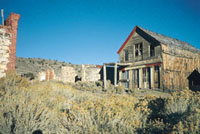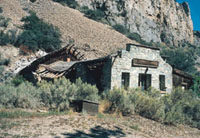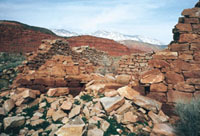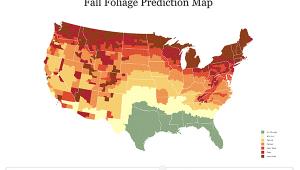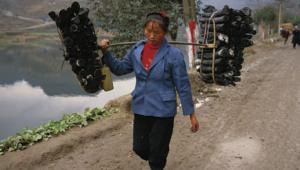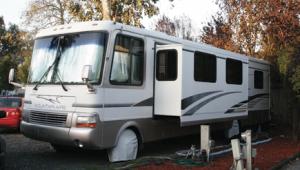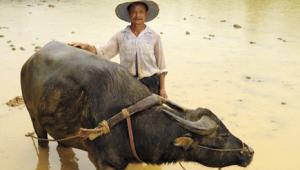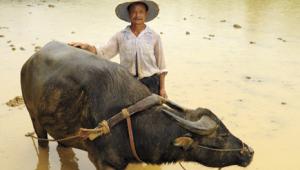Real "Ghost" Towns
Beware Of Outdated Travel Guides
Most photographers are a
restless lot, constantly on the lookout for new subjects at which to
aim their cameras. Many a cold, winter evening is spent poring over
vacation brochures, trying to decide which enticing destination would
offer the greatest number of photographic opportunities. Once a general
area is tentatively selected, the next step is usually a trip to the
library or bookstore for more detailed travel guides. And, depending
on your photographic interests, this is where the trouble begins. |
|||
Most people's, even Westerners'
idea of what a ghost town should look like is formed by what they've
seen portrayed in the movies and on television. The wonderful, extensive
groups of false-front buildings, which, except for a few broken windows
and a saloon door hanging askew, look like they were deserted the day
before yesterday. But unless you confine your travels to the few protected
sites or well preserved tourist traps, the first-time visitor to a genuine
ghost town is likely in for a letdown. Even with real gems such as Bodie,
California, I've met countless photographers who were stunned to
find themselves elbow to elbow with busloads of Chinese and German tourists.
The lonesome aura that they sought and expected to find no longer exists,
at least at any time the town is generally accessible. |
|||
Guidebooks, many written with
photographers in mind, are perceived differently. A photographer reading
them, unless told by the author otherwise, expects to find the scenes
presented in the books essentially the same when they visit. Unfortunately,
a number of factors have stacked the deck against you. As examples, the
photos I've chosen to illustrate this article were taken between
1970 and 1975; few of them exist as photographed today, and that's
only 25-30 years ago. Many of the guidebook photos were taken long before
that, many in the 1940s and '50s, or even earlier. |
|||
Fire was a constant scourge.
Entire towns could burn to the ground, the flames quickly spreading from
buildings built jam-packed next to one another, and leaping on the wind
across the narrow streets. |
|||
A last consideration is access.
Of the dwindling survivors, many are now behind locked gates, off-limits
to casual visitors. In some cases it's because the people who still
live there don't want to be bothered by a rising tide of tourists.
In others, corporately owned sites are regarded as insurance liabilities
in our litigation-happy society. A few are accessible, but now charge
entry fees. |
